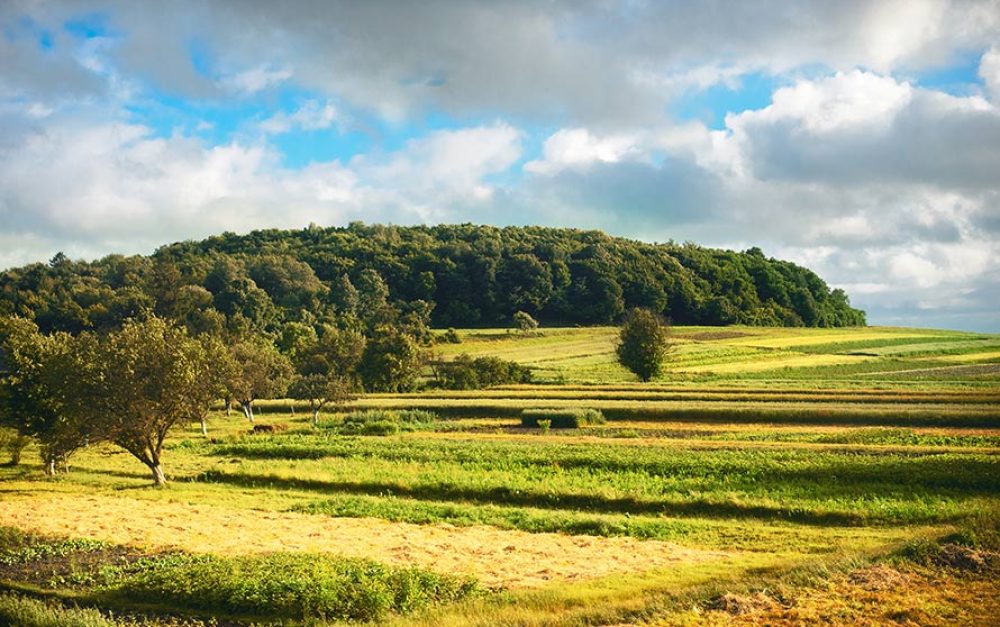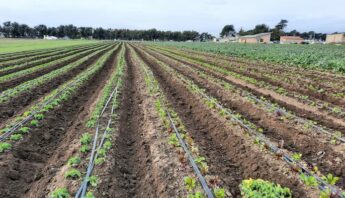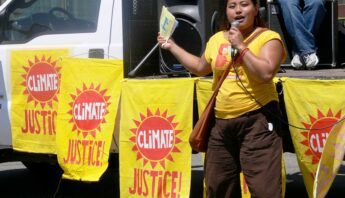Regenerative agriculture can reverse climate change within our lifetime. That’s the inspiring, well-documented message of longtime farmer and author Eric Toensmeier in his new book The Carbon Farming Solution.
Regenerative agriculture can reverse climate change within our lifetime. That’s the inspiring, well-documented message of longtime farmer and author Eric Toensmeier in his new book The Carbon Farming Solution. Deftly integrating explanations of science, local knowledge and public policy opportunities, Toensmeier shows how regenerative agriculture can and must be central to collective global action to address climate change.
The book, completed shortly after the 2015 climate talks, examines many of the key issues raised in Paris. In particular, Toensmeier presents solid, scientific evidence of the great potential for highly diverse agriculture to both mitigate and reverse the current trajectory of climate change. The data show that if implemented on a larger scale than currently practiced, regenerative agriculture — from tropical home gardens to temperate permaculture — could draw down more than 100 billion tons of carbon into the soil.
That’s equal to 367 billion tons of carbon dioxide (CO2) which would indeed bring us back from our current climate change tipping point. Climate scientists report that to reverse the disastrous course we’re now on, we need to draw down an estimated 200 billion metric tons of CO2.
Multiple benefits of carbon farming
Not only can carbon farming sequester great quantities of carbon currently in the atmosphere, it also offers resilience in the face of drought and flooding — and it’s multifunctional.
Bringing carbon into soil builds soil organic matter, which improves the soil’s ability to capture water. This can help prevent runoff during floods and increase water retention during times of drought. Soil organic matter content ranges from one percent in poor, arid soils, to about eight percent in the richest prairie soils — with most agricultural soils in the low end of the range. For every 21 tons of carbon sequestered per hectare (2.5 acres), soil organic matter goes up about one percent, which in turn increases the soil’s ability to hold water by 25,000 gallons.
Because it involves high levels of on-farm biodiversity, regenerative carbon farming produces lucrative combinations of food, fiber, building materials and biofuel. It also protects water resources, pollinators and wildlife habitat, and improves soil quality and productivity.
Even small increases in carbon content can have tremendous positive impacts when adopted over large areas. For example, about 70 percent of the world’s 2.5 billion acres of farmland are pastures. While “improved pasture” practices sequester only low to medium amounts of carbon, they are relatively easy to adopt. Minor increases in soil carbon on 70 percent of the Earth’s farmland can make a huge difference in reversing climate change. More intensive silvopastoral systems (planned incorporation of trees into pasture systems) can sequester much more, while also providing such benefits as fuel or fodder for animals.
In contrast to well-managed pastureland, most annual cropping systems are greenhouse gas (GHG) emitters. Annual crops constitute about 89 percent of non-pasture farmland, and just four crops occupy the vast majority: wheat, corn, rice and soybeans. Though conservation practices already exist on 10 percent of cropland, they generally have very low carbon sequestration rates, with the possible exception of regenerative organic farming.
Perennial crops & agroforestry
Perennial grain systems and agroforestry are at the heart of carbon farming. There are about 20,000 edible perennial crops, 6,000 of which are currently cultivated for food, fodder, materials, chemical and energy. Only about 100 of these are fully domesticated for food, along with about 30 industrial crops. Many perennial staple crops — cereals, pulses (including beans), oilseeds, tubers — are economically competitive with annual staples, especially in humid and tropical climates. In colder, drier climates, the yields of most perennial staples still fall below those of annual crops, although current efforts to improve perennial grains show promise.
Agroforestry systems offer the most robust version of carbon farming, sequestering by far the greatest amount of carbon at 10-40 times the best annual cropping or managed grazing systems. Agroforestry is described in some detail in The Carbon Farming Solution, not as a random incorporation of trees on farms, but rather as “intentional, intensive, integrated and interactive” system of farming. In addition to carbon sequestration, agroforestry systems can reduce need for fuel, fertilizers and pesticides. Agroforestry is currently practiced on about 250 million acres globally.
From practice to policy
The Carbon Farming Solution is a well-referenced, easy-to-read compilation of principles and practices of regenerative agriculture around the globe and across millennia — from tropical to temperate, well-established practices to experimental and readily implemented practices to the more challenging or complex. The quantified climate mitigation potential — as measured by carbon sequestration and reduction in GHG emissions — is presented for multiple systems, from the best managed annual cropping systems to complex, highly diverse, multifunctional systems that may include perennial herbs, woody species and livestock.
From practice to policy, Toensmeier shows how we can protect the planet and nourish 9.5 billion people — noting that we currently produce enough to feed 14 billion, but fail to do so. In Toensmeier’s vision for the future, carbon farming is firmly in the center of the climate solutions platform. It’s a vision in which farmers and farm organizations both lead the implementation of transformative practices and identify the policies needed to drive this agricultural transformation.
He notes that such transformative policies must be rooted in community development, community self-reliance and food sovereignty as modeled by the likes of Brazil’s Landless Workers’ Movement (MST) and the International Peasant Movement (La Via Campesina).
In this vision, climate mitigation funds are allocated to the millions of people around the world who are already doing the work of carbon farming, igniting a massive movement to transform global agriculture. Enabling policies might include carbon farming financial systems such as carbon taxes replacing carbon offset programs (typical of cap and trade policies) in which polluters still pollute but pay others for implementing carbon-sequestering practices.
Along with putting new policies in place that support carbon farming, we must remove national and international policies that continue to promote carbon- or GHG-emitting industrial-scale farming practices at the expense of regenerative, community-based practices.
Toensmeier’s new book makes it crystal clear: we must transform agriculture in order to protect our planet and to ensure healthy, viable communities around the globe. And we know it can be done, since it is already being demonstrated by innovative farmers and gardeners around the world.
A version of this blog also appeared as an OpEd in Community Word.







